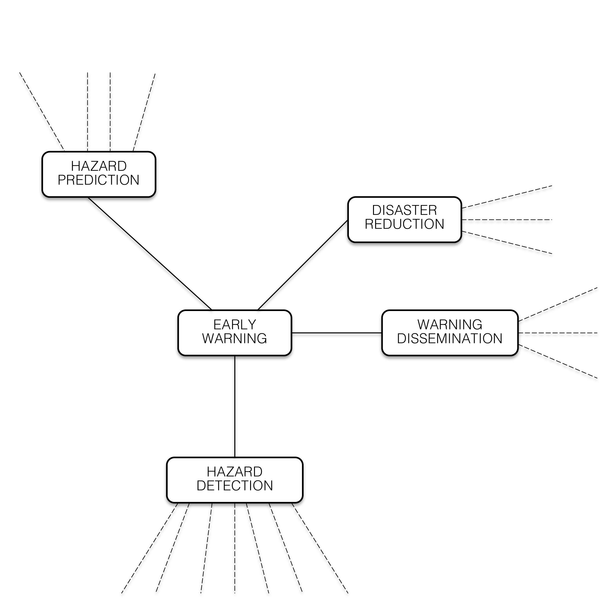
|

|

Tutorial Home | Site Map | Glossary | GEOSS URR | GEO |
|
| Early Warning: Starting Extending Adding Details Completing Analysis | Previous Next |

|
Extending the Local Environment Each of the main applications we linked to 'Early Warning' have several other applications linked to them. There are, for example, a number of different hazards that need to be detected, and the observations needed detect to some extent on the hazard. Examples are earthquakes, tsunamis, hurricanes, thunderstorms, air quality events, flash floods, and droughts, which all need specific observations and data analyses to detect hazardous events and situations. Similarly, ones a hazardous situation has been detected, the development of some hazards in space and time needs predictions that are hazard specific. Observations and models used to predict, for example, high probabilities of thunderstorms and high probabilities of a damaging tsunami at a certain coastal regions are rather different. Triggering of the prediction also may be different. Thunderstorm probabilities are part of the output of an operational weather forecasting, and alerts, for example, for sensitive asthma patients can be issued when a certain threshold is exceeded. Tsunami propagation predictions are triggered by the detection of sufficiently large, tsunamigenic earthquakes, and public alerts can be issued for those coastal areas where significant amplitudes are predicted. Up to now, we have restricted ourselves to applications. Other elements can easily be added in this local approach. |